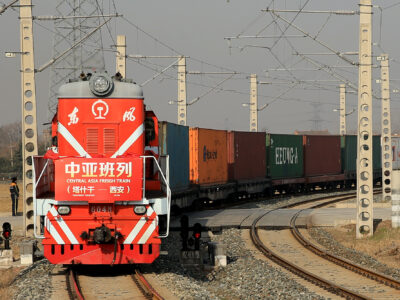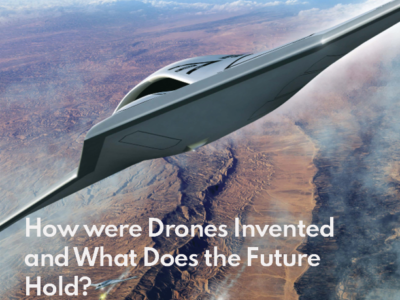Rabia Akhtar
Let’s begin by asking a question: Why would ANY state not want to achieve capabilities where it could advance its strategic interests by evading attribution or risk of escalation (at least initially), without firing a single conventional shot? As Bob Dylan would say, the times they are a-changin.
I have formulated my response to this question in the light of Rebecca Hersman’s incredibly brilliant articulation of the new nuclear paradox in her article ‘Wormhole Escalation’. She explains the new nuclear paradox as follows:
“As states drive to compete and win at the sub-conventional level — in the gray zone — the risk of strategic crisis may increase, even as the risk of conventional conflict between nuclear-armed states declines.”
She looks at the changing landscape of escalation and how it will come about and be perceived between adversaries, and questions the validity or utility of Herman Kahn’s 44-rung escalation ladder, which until now was continuous and linear. The gray zone, in which AI generated, fabricated, deep fake news operates, complicates the universally shared conceptions of deterrence. Across the full spectrum of conflict, the cross-domain coercion tools available to states are numerous and impactful: through digital soldiers, “nuclear powers can now engage their adversary’s core strategic interests directly, coercively and below the traditional form of armed conflict as we all know it or have theorized about.”
1.The character of conflict is changing: Growing asymmetry between states who are advancing towards acquiring disruptive technologies will upset the levels of conflict and our understanding of it: sub-conventional tactics that are non-nuclear, information based, have the potential to achieve strategic objectives. The conflict is no longer about only territorial claims or land grabs inviting direct contact with the enemy. The conflict in the cyber domain is non-linear and has the potential to dissuade your adversary to choose a particular action, whereby it places you in coercion dominance. Your defined thresholds are bound to change. If your adversary is able to achieve strategic objectives, through contactless, human proxy-less (digital soldiers are proxies too), non-nuclear, technology, how would that shape your definition of armed attack or act of aggression? Pakistan’s nuclear thresholds, would need to be redefined and re-studied in that context to include how disruptive technologies will impact Pakistan’s conventional and nuclear responses. Offensive posturing or strategy against hostile use of technologies will need to be developed. Not only will the character of conflict change, but the size of conflict, and the nature of its destruction will also change. So Pakistan would need to think how to counter-strategize against this one in particular.
2.The changing nature of warfare: Hypersonic weapons, networked militaries, advanced sensors, technologies that can disrupt your conventional and nuclear situational awareness, drone swarms, robotics, lasers, 5G/6G technology, quantum computing, big data analytics, algorithmic warfare, network centric cyber attacks, autonomous surveillance and weapons systems all are contributing to the changing nature of warfare and have in fact revolutionized it. A combination of these disruptive technologies will make crisis unpredictable. Most if not all of these disruptive technologies are dual-use. While they have the capability to blur the lines between conventional and nuclear use, and your enemy’s perception of it, the efficiency, accuracy and speed they provide to offensive military systems and weapons will dilute traditional deterrence. Therefore, once this understanding is achieved that the nature of warfare is altered due to advancements and inductions of these disruptive technologies or a combination of them, doctrinal changes would need to be made in order to enhance the credibility of one’s deterrence. Not only that, new forms of deterrence are being created, through cross-domain coercion for example, which would require capabilities that can strengthen the eroding or fragile deterrence. Pakistan would need to undertake a very critical situational analysis of India’s capabilities as it sets out to acquire disruptive technologies, the ones India can induct and employ against Pakistan, which have the potential to provide it cross-domain coercion.
3.Eroding Models of Crisis Management: Layers of complexity has been added into the traditional models of crisis management. Since the crisis itself and its triggers are becoming unpredictable, since the 44 rungs of escalation ladder is no longer linear, since gray zones created by disruptive technologies have added invisible rungs to the traditional ladder, having the potential to create strategic blindness, the nature of management of such a crisis will also become more complex. The tools to generate and shape a crisis through manipulation of information, or creation of conflicting data points, is bound to create a crisis of communication, which can erode a country’s confidence, thus pushing it to adopt, hastily acquired, escalatory measures, before a third party has a chance to intervene. If a country is pushed into a corner where it is made to believe, through fabricated, deep fake information, disrupting its entire communication ecosystem, that the first move is its only move, and if it does not act now then all will be lost, you can imagine the aftermath.
In view of these three areas of analysis, strategic stability in South Asia which already was fragile has become more precarious. I see strategic stability as a combination of deterrence stability and crisis stability, and disruptive technologies disturb both, deterrence and crisis stability.
Pakistan needs to undertake doctrinal changes to redesign its conventional and nuclear thresholds. I believe that given how far countries have already gone to acquire an edge over the other with respect to the acquisition of disruptive technologies, has already out-dated the doctrines, policies, and strategies of all strategic organizations and actors involved, and Pakistan is not unique to it.
In the absence of open source information, one cannot say as to what are the areas Pakistan is focusing on in tackling the effects of disruptive technologies especially given the trajectory of the Indian indegenious development and acquisition with its allies further ensuring that the asymmetric advantage is retained by India for times to come in our region. However, Pakistan is cognizant of the evolving strategic landscape not only in its immediate neighborhood but also in its larger neighborhood, is aware of India’s strategic alliances and alignments, and that of the Gulf countries as well enough to undertake measures and move towards indigenization of disruptive technologies and its acquisition if need be as a matter of priority for augmenting its national security.
The author is Editor, Pakistan Politico, and Director, Center for Security, Strategy and Policy Research, University of Lahore. The article was originally published in Pakistan Politico, and is being republished with permission.








Comments